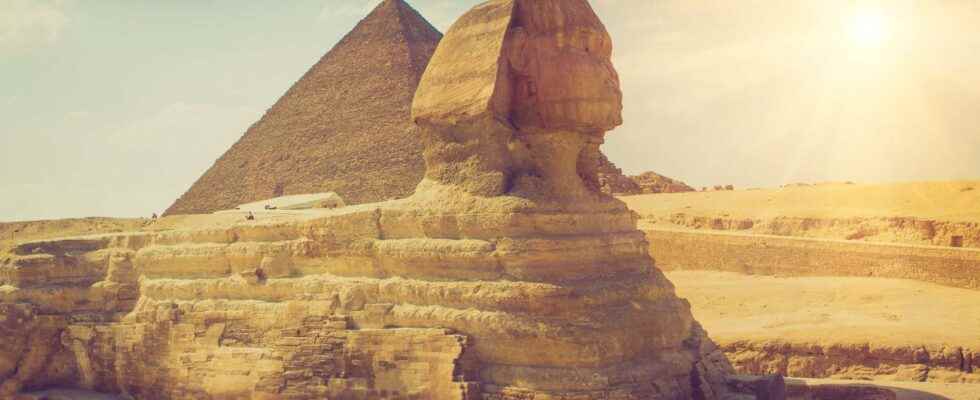Hatshepsut’s reign in ancient Egypt saw the construction of statues bearing the likeness of the pharaoh queen. His successor, by wanting to erase his predecessor from history, actually preserved the remnants of the sovereignty of one of the most famous Egyptian women.
You will also be interested
[EN VIDÉO] The mystery of the alignment of the pyramids finally solved? How did the engineers of ancient Egypt manage to align the pyramids of Giza so precisely along the four cardinal points? A researcher may have finally found the answer.
There is a temple ofHatshepsut at Deir el-Bahari, a funerary complex near the city of Luxor and south of the Valley of the Kings in Egypt. This temple is dedicated to this female pharaoh who reigned between 1479 and 1458 BC. Among the archaeological projects concerning this temple is the restoration of more than 70 sphinx sculpturescreatures with the body of Lion and with a human face. During the reign of Hatshepsut, the faces of sphinxes were in the effigy of the queen pharaoh but after her death, her successor Thutmose III had these statues destroyed in order to erase the marks of the reign of his predecessor. He thus had these sphinxes destroyed and the remains of the statues buried.
Erase the reign… or preserve its remains?
However, the preservation conditions conferred by the burial have allowed the features and colors of the faces to be exceptionally well preserved.
Hatshepsut’s skin was depicted in orange-yellow, according to canons of beauty at that time. The eyes are also still tinted. The restoration of the face is carried out with local materials and in particular rock limestone of Thebes and pigments ocher from around Deir el-Bahari.
Two colossal sphinxes discovered in Egypt
Two statues of sphinxes have been discovered in a temple built more than 3,300 years ago during the reign of Amenhotep III, Tutankhamun’s grandfather. References to Amenhotep III are inscribed on these colossal statues.
Article of Fiji Beriopublished on 06/02/2022
The “Temple of Millions of Years” was erected during the reign ofAmenhotep III, at the request of the Pharaoh. He wanted the construction of a temple which would be used in particular to carry out rituals and to make offerings in his honor after his death. This funerary temple was built at the end of the reign of Amenhotep III, which lasted between approximately 1390 and 1353 BC. This complex was in the necropolis of Thebes (the present city of Luxor) which overlooks the Nile and was destroyed by a earthquake around 1200 BC Most of the temple’s columns and statues were destroyed or submerged and it was not until 1988 that restoration work on the temple began.
Sphinxes with the face of the pharaoh
Despite the age of this work, archaeologists are still discovering elements of the temple. They thus exhumed three busts in granite black representing the goddess Sekhmet with a lion’s head, protector of the sovereigns of Egypt, and which served to protect the courtyard of the temple.
Two statues representing sphinxes, chimeras between man and lion, just updated. The face of the sphinxes probably represents Amenhotep III with a headdress, a royal beard as well as a large necklace and one of the statues carries an inscription referring to this pharaoh.
Archaeologists estimate that the original height of the statues was around eight meters and archaeologists are currently working on their restoration.
Interested in what you just read?
